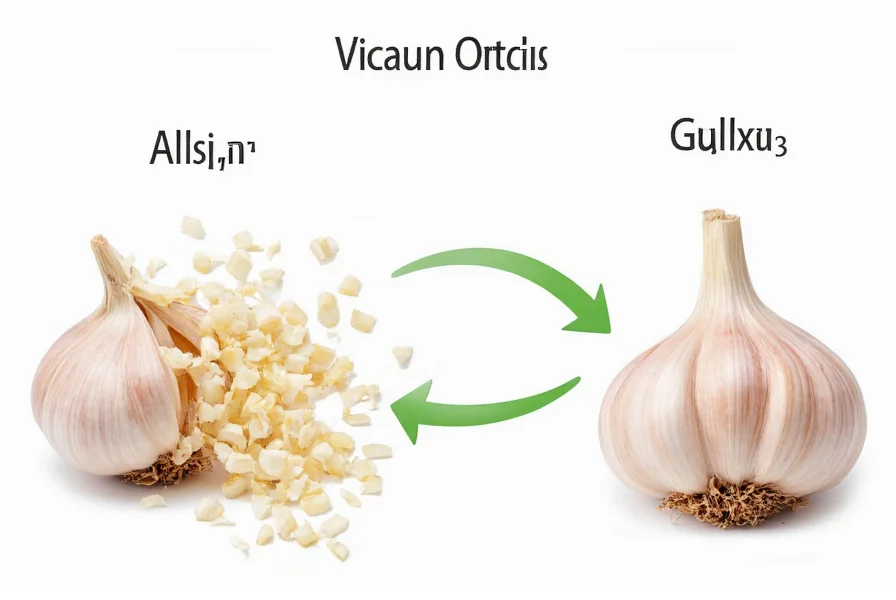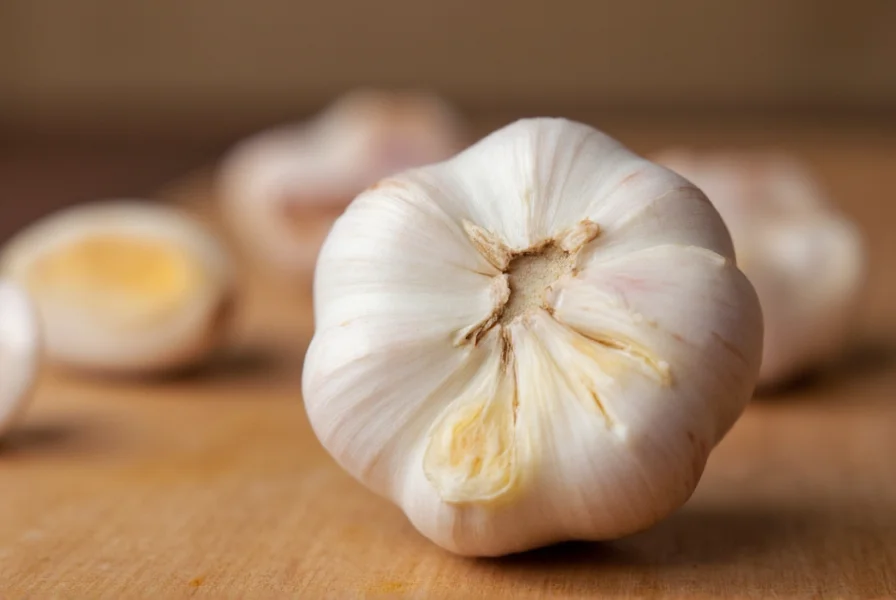Understanding the proper use of crushed garlic transforms ordinary dishes into culinary masterpieces. When you crush a garlic clove, you rupture more of its cell walls than chopping would, releasing greater amounts of allicin—the compound responsible for garlic's distinctive flavor and health benefits. This process creates a more intense, complex garlic profile that integrates smoothly into dishes.
What Exactly Is Crushed Garlic?
Crushed garlic refers to a garlic clove that has been flattened and broken down into a coarse paste, but not finely minced. Unlike minced garlic which maintains distinct pieces, crushed garlic forms a more homogeneous mixture where the clove's structure has been completely broken down. This technique maximizes surface area exposure, accelerating the chemical reactions that develop garlic's characteristic aroma and flavor.
Crushed vs. Minced vs. Chopped: Critical Differences
The preparation method dramatically affects garlic's flavor profile and culinary application. Understanding these differences helps you make better cooking decisions:
| Preparation Method | Texture | Flavor Intensity | Best Culinary Uses |
|---|---|---|---|
| Crushed | Coarse paste, no distinct pieces | Highest initial intensity, mellows significantly | Sauces, soups, braises, marinades |
| Minced | Small, uniform pieces | Moderate intensity, consistent throughout cooking | Stir-fries, sautés, dressings |
| Chopped | Larger, irregular pieces | Milder, more subtle flavor | Roasted dishes, garlic bread, whole clove applications |
Mastering the Art of Crushing Garlic
Professional chefs use specific techniques to maximize flavor extraction while minimizing waste. Follow these steps for perfect crushed garlic every time:
- Peel the garlic clove by placing it under your knife blade and applying firm pressure
- Place the flat side of your chef's knife over the clove
- Sprinkle a pinch of coarse salt over the clove (helps prevent slipping)
- Apply firm, even pressure with the heel of your hand
- Rock the knife gently to break down the clove into a paste
- Use the side of your knife to gather the crushed garlic
This traditional method releases maximum flavor compounds while creating a texture that integrates perfectly into sauces and dressings. For larger quantities, consider using a garlic press, though this produces a slightly different flavor profile due to more complete cell rupture.
When to Choose Crushed Garlic in Your Cooking
Certain dishes benefit significantly from using crushed rather than chopped or minced garlic. Understanding when to crush garlic makes a substantial difference in your culinary results:
- Slow-cooked dishes: Crushed garlic infuses soups, stews, and braises more effectively
- Oil-based sauces: Creates better emulsification in aioli and vinaigrettes
- Meat marinades: Penetrates deeper into proteins for more flavorful results
- Creamy sauces: Distributes evenly without creating texture issues
- Garlic-infused oils: Provides maximum flavor extraction
For dishes requiring distinct garlic pieces or quick cooking times, minced or chopped garlic often works better. The key is matching your preparation method to your cooking technique and desired flavor profile.
Precise Measurement Guide for Crushed Garlic
Accurate measurement ensures consistent results in your recipes. Understanding how much crushed garlic equals one clove prevents overpowering your dishes:
- One average-sized garlic clove = ½ teaspoon crushed garlic
- Three medium cloves = 1½ teaspoons (or ½ tablespoon) crushed
- Six large cloves = 1 tablespoon crushed garlic
Remember that garlic size varies significantly. When precision matters, use a kitchen scale—approximately 5-7 grams per medium clove. For most home cooking, the teaspoon measurement provides sufficient accuracy while maintaining recipe balance.
The Science Behind Crushed Garlic's Flavor Profile
Crushing garlic triggers enzymatic reactions that develop its characteristic flavor. When cell walls break, alliinase enzymes convert alliin to allicin—the compound responsible for garlic's pungency. This reaction peaks at about 30 seconds after crushing and continues developing for several minutes.
Allowing crushed garlic to rest for 1-2 minutes before cooking maximizes flavor development. Adding it directly to hot oil immediately stops this process, resulting in a sharper, more aggressive garlic flavor. For mellower results, let crushed garlic rest before introducing to heat.

Proper Storage Techniques for Crushed Garlic
Crushed garlic loses potency faster than whole cloves due to increased surface area. Follow these storage guidelines to maintain quality:
- Refrigerate in an airtight container for up to 3 days
- Mix with a small amount of olive oil to create a paste that lasts 5-7 days
- Freeze in ice cube trays covered with oil for up to 3 months
- Never store crushed garlic in oil at room temperature (botulism risk)
For best results, crush garlic immediately before use. The flavor compounds begin degrading within minutes of preparation, with significant loss occurring after 30 minutes.
Common Mistakes to Avoid When Crushing Garlic
Even experienced cooks make these errors that compromise garlic's flavor potential:
- Using dull knives: Makes crushing difficult and creates uneven texture
- Skipping the salt: Causes garlic to stick to the blade and slip
- Adding directly to hot oil: Burns garlic before flavor develops properly
- Over-crushing: Creates bitter flavors from excessive cell rupture
- Using pre-minced jarred garlic: Lacks fresh flavor compounds and often contains preservatives
Health Benefits of Properly Crushed Garlic
The method of preparation affects garlic's health-promoting compounds. Crushing garlic activates allicin, which research shows provides numerous benefits:
- Supports cardiovascular health by improving blood flow
- Contains antioxidant properties that combat oxidative stress
- May support immune function through antimicrobial effects
- Contributes to healthy inflammation response in the body
Allowing crushed garlic to rest for 10 minutes before cooking maximizes these benefits, as the allicin formation process requires time to complete. Cooking immediately after crushing reduces the health-promoting compounds by up to 90%.











 浙公网安备
33010002000092号
浙公网安备
33010002000092号 浙B2-20120091-4
浙B2-20120091-4